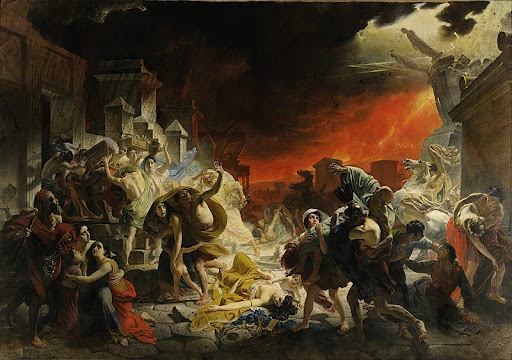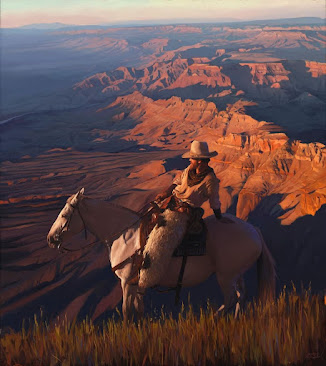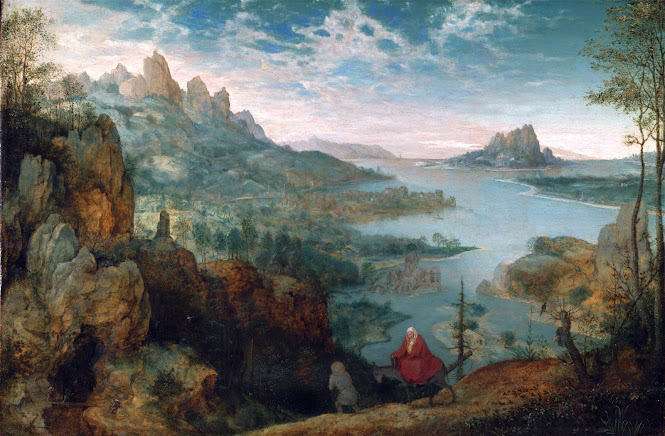The Russian Imperial Art Academy has undergone many changes since Peter the Great's idea of a Russian art school came to fruition in 1756. Beginning as the Academy Of Three Noble Arts the school was legitimized under Catherine the Great's rule when she declared the academy a new title of Imperial Art Academy. With this, we see Russian artists rising to popularity through the school for the first time. The 19th century became a breeding ground for large breakthroughs as Russian artists from the school gained fame. The first of such breakthroughs was Karl Bryullov's 'The Last Day of Pompeii' which earned the Paris Grand Prix prize at the Paris Salon in 1834.
In search of the underlying theme shifts during the 19th century, I will analyze 4 paintings of 19th-century Imperial Art Academy students who achieved fame. I will be specifically looking at the influences of the academy and how they show themselves in the evolving styles from Neoclassical to French Impressionist influences.

The first and earliest painting mentioned earlier is 'The Last Day of Pompeii' painted by Karl Bryullov, which was likely painted in a studio in Italy. The painting took him from 1830-1833 because of the amount of travel he did to gain inspiration, and the scale of the work being almost 15 feet by 21 feet. This painting is particularly interesting for its primarily Russian-inspired themes of Neoclassicalism, while also beginning to see the French influence of romanticism. The figures appear classically structured very much due to his time learning at the Imperial Academy of Art. Yet the scene itself takes on a more romantic feel with the dramatic sky and the helplessness of human creations in the face of destruction.
I've included this zoomed-in image of the figures to better convey the classical structure of the figures, their well-sculpted muscles, and flawless skin a testament to Bryullov's training. This painting captured my attention right away from this period for its vastness and beautiful detail allowing me to look at the painting for a long time. The quantity of narratives taking place in this painting is breathtaking, each figure appears with its own story that adds to the captivating emotions of the piece.
This painting is titled
'View of The Monument to Peter' by Vasily Surikov in 1830. The painting was likely done while Surikov was in Saint Petersburg. This is one of Surikov's very early works before he became as established as a prominent realistic history painter. His later works are more similar to the previous paintings by Bryullov except he did his more prominent paintings in Moscow and not France. Surikov's French influences are less easily identified at this stage, but you can see the neoclassical influence in his choice to paint Peter the Great, representing historical figures is something common in Russian art. The dominating scale of the horse statue especially within the context of the smaller horses on the bottom right of the painting really highlights the importance of historical figures to Surikov. We can see the beginnings of Surikovs use of dramatic composition that are characteristic of his later works, with the controlled values and bright moon to light up the dark street. This painting is a great representation of the style of Russian teaching at the academy during this time.

The final painting is 'Symphony' by Nikolai Bogdanov-Belsky, painted in 1920 in Lake Udomlya in Tver province, Russia. While this piece is getting out of the 19th century I chose it because Nikoly studied at the Imperial Art Academy from 1894-1895, giving him some of the same technical training that the other artists had in the 19th century. This painting though shows the final evolvement of French influence on the Russian painting scene, adopting a much more impressionist brushwork style Nikolai was able to access a more modern crowd with his paintings. Despite this evolution in technical application, underlying themes are evident from his training in Russia. One most prominent is his choice of a very domestic and sentimental scene, with the flowers and soft light representing fertility and the figure's calm and peaceful expressions. This theme of everyday life painted with a more sentimental approach stems from 19th-century Itinerant artists in Russia who sought a similar effect in their works.
The exploration of 19th-century art and Russia's involvement through the education provided at the Imperial Art Academy displays what it takes for a country to become a part of the art world. It is options for higher education and an inspiration for dedication to the craft of fine art that allows for international acclaim and acceptance. It also shows the involvement of European themes and how they affect the art scene worldwide. Of all these pieces I am most likely to own a copy of Symphony, its peaceful lighting and brilliant use of brushwork fooling the viewer's eye into details not present make it a real pleasure to analyze. I am very thankful for the wonderful array of art from across the world that continues to inspire artists today in our increasingly connected world. The Imperial Art Academy is just one example of bringing about a more connected world through art.
works cited
Truth, At Sunnyside-Where, and Beauty Meet. “Nikolai Bogdanov-Belsky: Symphony (1920).” At Sunnyside - Where Truth and Beauty Meet, 7 Nov. 2018, atsunnyside.blog/2018/11/07/nikolai-bogdanov-belsky-symphony-1920/. Accessed 24 Apr. 2024.
Russia Academy. “HISTORY.” Eng.rah.ru, eng.rah.ru/academy/history/. Accessed 24 Apr. 2024.
Google Arts and Culture. “The Last Day of Pompeii - Karl Brullov.” Google Arts & Culture, artsandculture.google.com/asset/the-last-day-of-pompeii-karl-brullov/tAFrCGFUhXM8Jg?hl=en.

.jpeg)




Hi Fin, your choice of Russian Imperial Arts choices was very interesting. I liked the lighting in the first two paintings, but what caught my eye in the third painting were the trees in the window. They remind me of the Christmas trees we have here in Alaska. The lighting of the evening sky and the candlelight were so surreal. From what I learned, Bogdanov-Belsky studied in Paris in the early 1900s. I enjoyed reading your blog!
ReplyDeleteI appreciate that you covered the Imperial Art Academy- myself and many others chose to cover Japanese art throughout history, so seeing you focus on Russian art is refreshing. Furthermore, I love the realism that these works show! I especially love "The Last Day of Pompeii" and "View of The Monument of Peter" for how they're painted. I like your attention to detail as well, such as how you pointed out the domineering size of the statue of Saint Peter, and how it shows the reverence for historical figures in Russian culture. I feel like where my art focused on natural beauty and pleasant color tones, yours all tried to tell a story and used more intense coloring, such as the such as the fire and smoke in "The Last Day of Pompeii" and the dreary moonlit sky in "View of The Monument of Peter". Lovely works overall!
ReplyDeleteRussian Imperial Art is an excellent topic and your exploration from its inception to its impact on 19th-century art is very well done. The transition from the Academy Of Three Noble Arts to the Imperial Art Academy under Catherine the Great's rule marked a turning point that ultimately propelled Russian artists to international fame. Karl Bryullov's work, 'The Last Day of Pompeii,' makes a great example of this shift, as it blends Russian Neoclassical themes with emerging French Romantic influences, evident in its dramatic portrayal of human vulnerability amidst destruction. Surikov's 'View of The Monument to Peter' reflects the academy's influence through its portrayal of historical figures, showcasing a blend of neoclassical and dramatic composition which is characteristic of Russian art. Despite Nikolai Bogdanov-Belsky's 'Symphony' being from the early 20th century, his training at the Imperial Art Academy highlights the lasting impact of French impressionism on Russian art. Your post wonderfully illustrates how the academy's education and exposure to European themes contributed to Russia's integration into the global art scene.
ReplyDelete